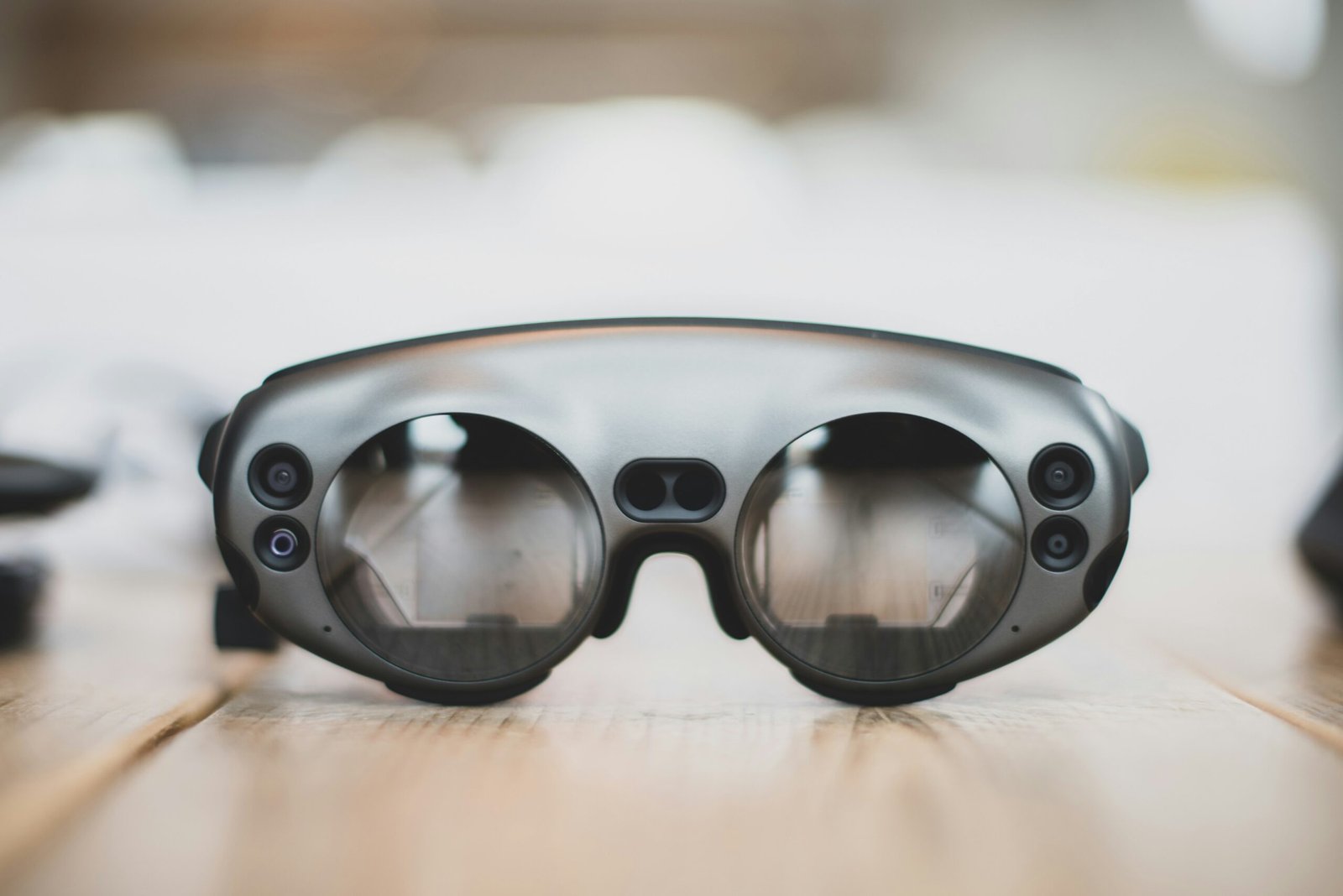Introduction to AI-Driven Wearables
Artificial intelligence (AI)-driven wearable devices refer to smart gadgets designed to be worn on the body, enhanced with AI capabilities to analyze, interpret, and respond to various data inputs. These advanced wearables go beyond simplistic functionality; they incorporate sophisticated algorithms that mimic cognitive processes, enabling devices to learn from user interactions and adapt accordingly. As of 2023, the landscape of wearable technology boasts a rich array of devices, primarily encompassing fitness trackers, smartwatches, and health monitors. Notable examples include the Apple Watch, Fitbit, and various heart-rate monitoring devices that have rapidly gained popularity among users.
The rise of wearable technology reflects a broader trend towards health, fitness, and overall well-being. Users increasingly demand devices that offer real-time insights into their physical condition, which AI-driven wearables are excellently positioned to provide. These devices employ machine learning to deliver personalized experiences through continuous data collection and analysis. For instance, a fitness tracker can assess a user’s heart rate, activity levels, and sleep patterns, offering customized recommendations to improve their health. This level of interactivity epitomizes the transformative capabilities of AI in wearables.
Moreover, the integration of AI technology enables wearables to support predictive analytics, allowing for proactive health management. This progression signifies a pivotal shift in how individuals approach their health and fitness journeys. In an era where data is abundant, the ability of these devices to sift through relevant metrics and correlate them with health outcomes not only informs users but also empowers them to make better lifestyle choices. As we look towards 2025, it is anticipated that innovations in AI-driven wearables will usher in more advanced features, ultimately reshaping the approach to personal health management and enhancing user experience.
Technological Advancements Shaping Wearables by 2025
The landscape of wearable devices is undergoing a significant evolution, driven by a series of technological advancements expected to culminate by the year 2025. One of the most impactful areas is sensor technology, which is seeing rapid improvements in accuracy and size. Emerging sensors are becoming more sophisticated, enabling wearables to monitor a wider array of physiological parameters, such as heart rate variability, blood glucose levels, and even hydration status. This enhanced sensor capability is transforming wearables from simple tracking devices to comprehensive health monitors, providing users with actionable insights about their physical well-being.
Battery life is another critical aspect that is undergoing significant advancements. As wearables become more complex and data-intensive, the demand for longer-lasting batteries becomes imperative. Innovations in battery technology, including the development of solid-state batteries and energy-efficient charging methods, are expected to extend the operational lifespan of wearable devices. This means that users will not have to charge their devices as frequently, thus enhancing the overall user experience and functionality of wearables.
Moreover, artificial intelligence (AI) algorithms are playing an essential role in the next generation of wearables. AI and machine learning enhance the capability of these devices to analyze user data in real-time, offering personalized recommendations and feedback. For instance, AI-driven wearables can learn from a user’s habits and health metrics to provide tailored fitness plans, dietary suggestions, or alerts in case of irregular health patterns. The integration of advanced data analytics will further improve the accuracy of health tracking and predictive capabilities.
Finally, the miniaturization of components allows manufacturers to develop sleeker, more stylish wearables that are comfortable to wear without sacrificing functionality. This melding of aesthetics and performance is likely to appeal to a broader range of consumers, ensuring that wearable devices become an integral part of daily life by 2025.
Health and Wellness Impacts of Wearable Devices
As the technological landscape evolves, AI-driven wearable devices are set to revolutionize personal healthcare by 2025. These devices will provide real-time health monitoring, enabling users to track vital signs such as heart rate, blood pressure, and oxygen saturation continuously. This capability promises a shift from reactive to proactive health management, allowing users to gain insights into their health conditions and make informed decisions accordingly.
The integration of artificial intelligence into wearables enhances the functionality and accuracy of health information. For instance, individuals at risk of chronic conditions may receive personalized alerts when their physiological metrics deviate from established norms. As a result, timely intervention can be initiated, potentially preventing severe health issues or hospitalization. This predictive capability is a paradigm shift as it turns wearables into essential tools for preventative healthcare.
Furthermore, AI-driven wearables will offer tailored health recommendations based on user data. This might include customized exercise plans, dietary suggestions, or alerts for medication adherence. By analyzing patterns in the collected data, wearables can suggest modifications that cater to an individual’s lifestyle and health goals. For example, a user who consistently displays elevated stress levels might receive mindfulness exercises or relaxation techniques through their wearable device, contributing to overall wellness.
Case studies exemplify the transformative potential of these devices. Consider a hypothetical scenario where a user with diabetes wears an AI-enabled device that monitors glucose levels. The device not only alerts them of fluctuations but also recommends dietary adjustments and informs medical professionals when necessary. This proactive management promotes better health outcomes and enhances the user’s quality of life.
In summary, the integration of AI into wearable devices by 2025 is poised to significantly impact health and wellness. Through real-time monitoring, personalized recommendations, and predictive analytics, users can take charge of their health journey, paving the way for a healthier future.
Challenges and Ethical Considerations
The rapid proliferation of AI-driven wearable devices has introduced a range of challenges and ethical considerations that warrant critical examination. One of the foremost concerns centers around data privacy. As these devices collect vast amounts of personal health information, including biometric data and lifestyle habits, the potential for misuse becomes a pressing issue. Users must entrust manufacturers and service providers with their sensitive data, raising questions about how this data is stored, shared, and ultimately utilized. The risk of data breaches further complicates this landscape, where hackers could exploit vulnerabilities in device security to access sensitive health information.
Additionally, there are significant security issues associated with health data collected by AI-driven wearable devices. The integration of artificial intelligence raises the stakes, as these systems can potentially be manipulated or hacked, leading to false health readings or compromised user information. Ensuring robust cybersecurity measures is essential; however, many manufacturers may overlook influential factors such as continuous software updates and user education on security practices. Consequently, the responsibility shifts not only to companies but also to users in understanding the security features of their devices.
Moreover, the reliance on technology for personal health management raises ethical dilemmas. As individuals increasingly depend on wearables for monitoring their health, there can be ethical implications regarding autonomy and decision-making. Users may become overly reliant on the data provided, leading to a diminished ability to make informed health choices without technological insights. This scenario necessitates careful evaluation of how AI-driven wearables influence health behaviors and the broader implications for public health. From a regulatory perspective, establishing guidelines and safeguards becomes crucial. As these devices integrate deeper into daily life, a collaborative approach involving stakeholders—including manufacturers, healthcare providers, and policymakers—will be vital in addressing these enduring challenges.









